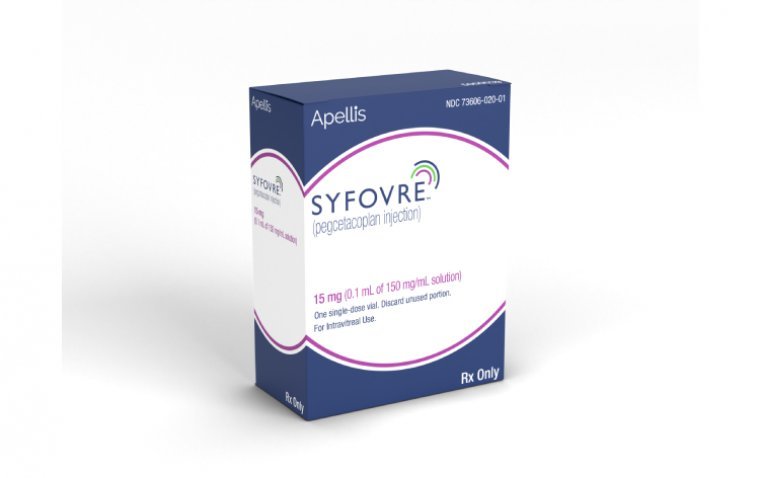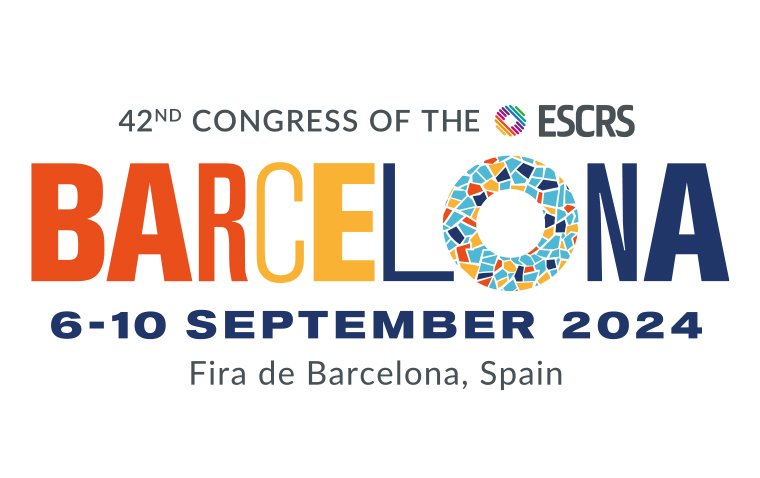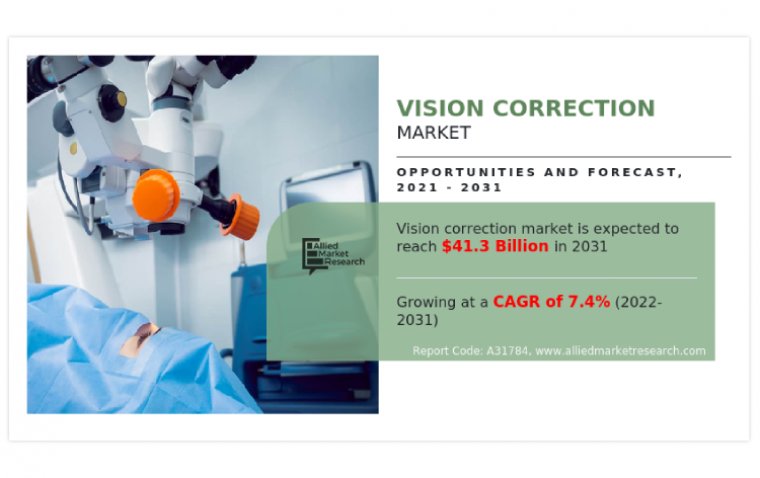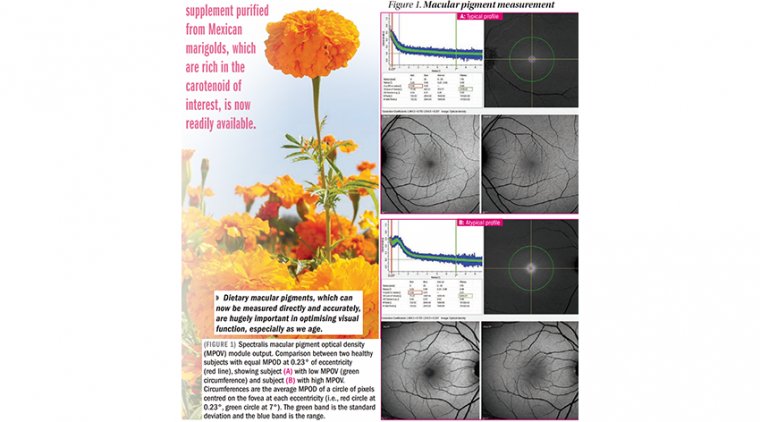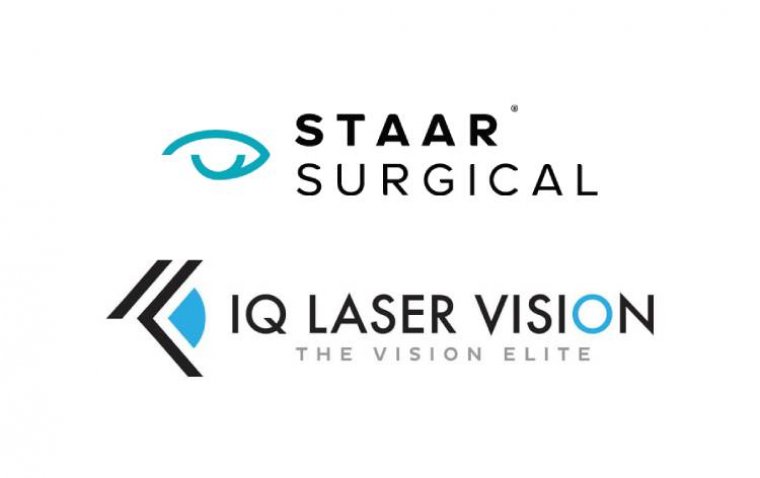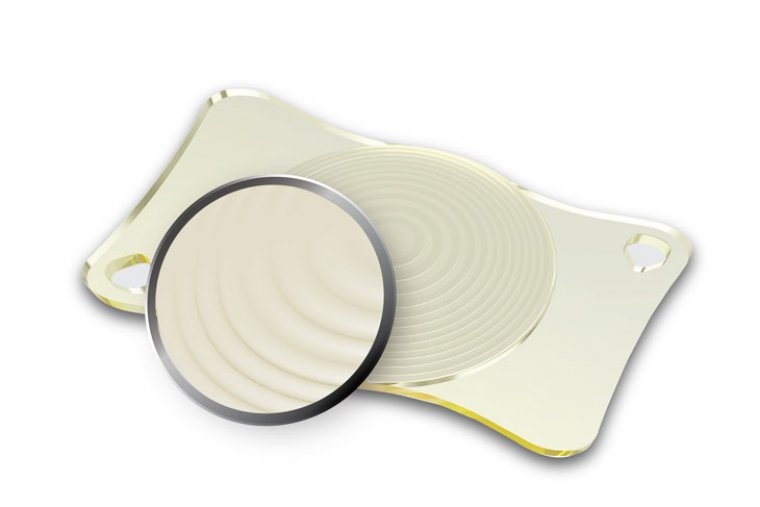
World’s First And Only Sinusoidal Trifocal Intra Ocular Lens
AcrivaUD Trinova Comes to the Fore with its Four Main Features
The world’s first and only sinusoidal trifocal iol Acrivaud trinova used by ophthalmologists in 64 countries across the world to correct cataracts and for refractive lens exchange attracts more attention with its four main features.
World’s First and Only Sinusoidal Trifocal Intra Ocular Lens
AcrivaUD Trinova
Comes to the Fore with its Four Main Features
1 – Sinusoidal Optical Surface Minimizes Dysphotopsia After Cataract Surgery
AcrivaUD Trinova Sinusoidal Trifocal IOL minimizes the risk of dysphotopsia such as halos and glare with its sinusoidal surface profile that does not exhibit any sharp edges.
Dysphotopsia means unwanted images that are seen after IOL implantation. Dysphotopsia occurs in two groups as positive and negative dysphotopsia. While positive dysphotopsia occurs as glare, halos and starbursts, negative dysphotopsia is defined as black lines or shadows occurring in the periphery.1 Published studies indicate that the reason for dysphotopsia is optics having surface profile with sharp edges.2 Dr. Masket stated that they did not especially encounter positive dysphotopsia until the mid 1990’s when lenses with sharp edges have started to be used; positive dysphotopsia has started to be seen with traditional lens structures with optical surface profile with sharp edges.3
| AcrivaUD Trinova minimizes scattered light by its sinusoidal optical surface with smooth stepless zones and also minimizes the risk of post-op dysphotopsia such as halos, glare, and starbursts. Scattered light is common with traditional trifocal IOL’s that have an overlapping pattern with sharp edges.
|
||||
| *Sinusoidal pattern | ||||
|
AcrivaUD Trinova,
|
Traditional Trifocal IOL Surface Profile, Overlapping Pattern With Sharp Edges |
|||
2 – At 92%, Trinova Provides the Highest Light Transmission to the Retina Among All Trifocal IOLs
Conducted studies have demonstrated that the crystalline lens of a 4.5 year-old child has 96% light transmittance on average1, however a 30 year-old adult has 95%1 light transmittance. In order to decrease toxicity with advancing age, the light transmittance ratio also decreases. This ratio regresses to 31% at 75 years of age. AcrivaUD Trinova is the only trifocal IOL that has the closest light transmission to crystalline lens with its 92%3 light transmittance.
Trinova protects the retina against the harmful effects of UV lights with its BB (Blue Balance) filter material.
Each percentage of light loss exponentially affects patients’ overall visual performance. AcrivaUD Trinova ensures maximum light transmission, thanks to its stepless diffractive zones and thus improves contrast sensitivity.
LIGHT TRANSMISSION
THE NEAREST LIGHT TRANSMISSION TO A YOUNG AND HEALTHY EYE
92%
Light transmission
Comparison of Crystalline Lens and Trifocal IOLs in Respect of Light Transmission to Retina
| IOL | Light Transfer to retina | |
| Natural Crystalline Lens | 95%1 | -30 year-old healthy individual eye |
| AcrivaUD Trinova (+1.50D/+3.00D) | 92%3 | -New Generation Trifocal IOL, Sinusoidal optics |
| IOL A (+1.75D/+3.50D) | 86%2 | -Traditional Trifocal IOL, “Overlapping Pattern” with Sharp Edges |
| IOL B (+1.66D/+3.33D) | 85.7%2 | -Traditional Trifocal IOL, “Overlapping Pattern” with Sharp Edges |
| IOL C (+2.17D/+3.25D) | 88%2 | -Traditional Trifocal IOL, “Overlapping Pattern” with Sharp Edges |
3- With its Sinusoidal Optical Surface, AcrivaUD Trinova Has the Widest Depth of Focus of All Trifocal IOLs
Technological developments and lifestyle-changes are factors that compel some individuals to have good near vision to perform their daily activities. AcrivaUD Trinova’s +3.00D near addition and +1.50D intermediate addition are designed specifically with patients’ life-quality in mind. From 38 cm to 80 cm reading distance will cover all daily requirements for near and intermediate vision.
| IOL | Near Addition | Theoretical Reading Distance | Intermediate Addition | Theoretical Reading Distance | Distance of Depth of Focus |
| AcrivaUD Trinova | +3.00D | 38 cm | +1.50D | 80 cm | 42 cm |
| IOL A: | +3.50D | 34 cm | +1.75D | 68 cm | 34 cm |
| IOL B: | +3.33D | 36 cm | +1.66D | 72 cm | 36 cm |
| IOL C: | +3.25D | 35 cm | +2.17D | 55 cm | 20 cm |
Modulation (%)
Reading distance (%)
NEAR INTERMEDIATE FAR CONTINUOUS VISION
4 – Tolerance To Decentration And Large Kappa Angle
Angle kappa is the angle between the visual axis and the pupillary axis. The larger the kappa angle, the more central your pupil is in the cornea from the visual axis, the higher the chance of negative dysphotopsia.1,2
This measurement is of paramount consideration in cataract and refractive surgery, as proper centration is required for optimal results. The angle kappa may contribute to IOL decentration and its resultant photic phenomena.
If the lens is significantly decentered because of a failure to accommodate for the angle kappa, then central light rays may miss the central optical zone and pass through one of the multifocal rings, which leads to glare. In 2012, Berdahl suggested that MFIOLs are unacceptable for use if the angle kappa is greater than half of the diameter of the central optical zone for the respective lens.2
In this case, the size of the central ring plays an important role. Clearly , an IOL with a large central ring may tolerate the large angle kappa to a much higher degree than an IOL with a small central ring.
With a central diameter of 1.4 mm, AcrivaUD Trinova has the largest tolerance to the angle kappa.
In patients implanted with Trifocal IOLs, a direct relation between patients’ satisfaction in terms of vision and the angle kappa has been observed.3
In the event that an IOL is decentered, the potential exists for it to induce coma or other higher order aberrations because the IOL optic will be off axis from the true visual axis. If a patient has significant angle kappa, their pupillary axis will not be in alignment with the visual axis. Whilst such patients’ IOL may be perfectly centered with the pupil, a ray of light from the visual axis will not pass through the center of the IOL but instead will strike the optic obliquely. This can lead to a patient experiencing poor image quality or even glare symptoms. Adjusting the placement of IOLs for the angle kappa is likely to help reduce glare and halos.
Consequently, AcrivaUD Trinova is the only trifocal IOL with the highest tolerance to large angle kappa.
Kappa distance < Central ring radius Kappa distance ≥ Central ring radius
With a central diameter of 1.4 mm, AcrivaUD Trinova has the highest tolerance to angle kappa
References
1 Holladay JT, Simpson MJ. Negative dysphotopsia: Causes and rationale for prevention and treatment. J Cataract Refract Surg 2017;43:2:263-275
2 Majid Moshirfar, Ryan N. Hoggan, and Valliammai Muthappan, Oman J Ophthalmol. 2013 Sep-Dec; 6(3): 151–158.
3 Amar Agarwal, MS, FRCS, FRCOphth; Dhivya Ashok Kumar, MD; Soosan Jacob, MS, FRCS, Ocular Surgery News U.S. Edition, May 10, 2010
(1).jpg)

